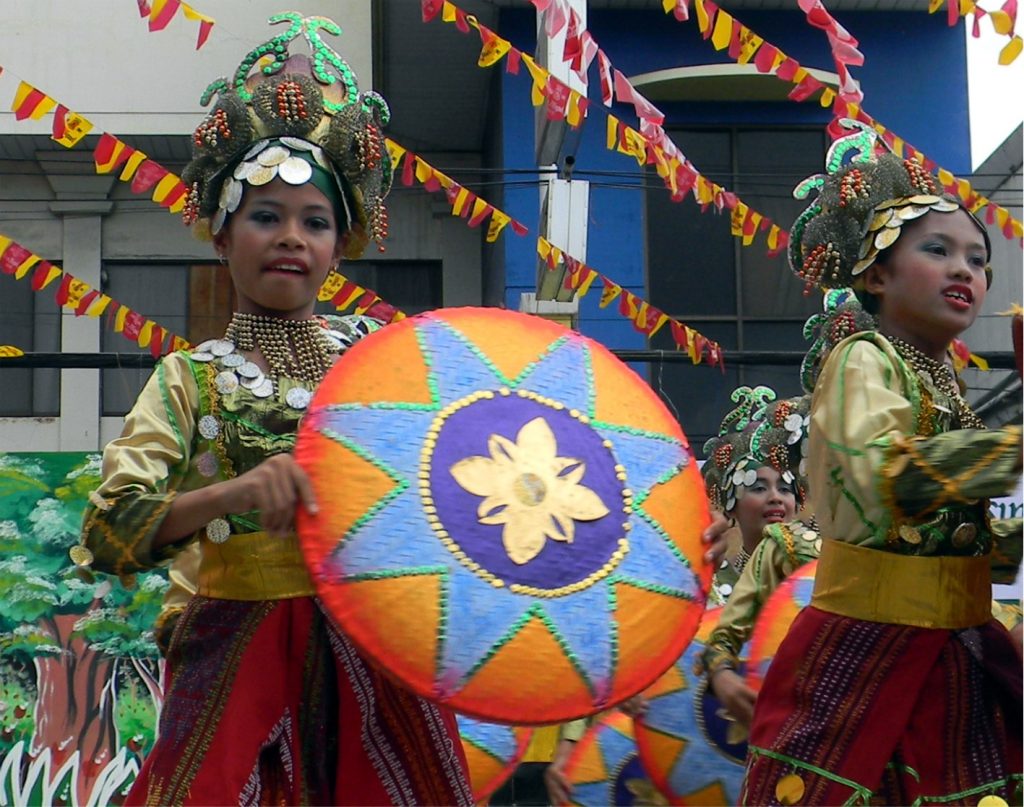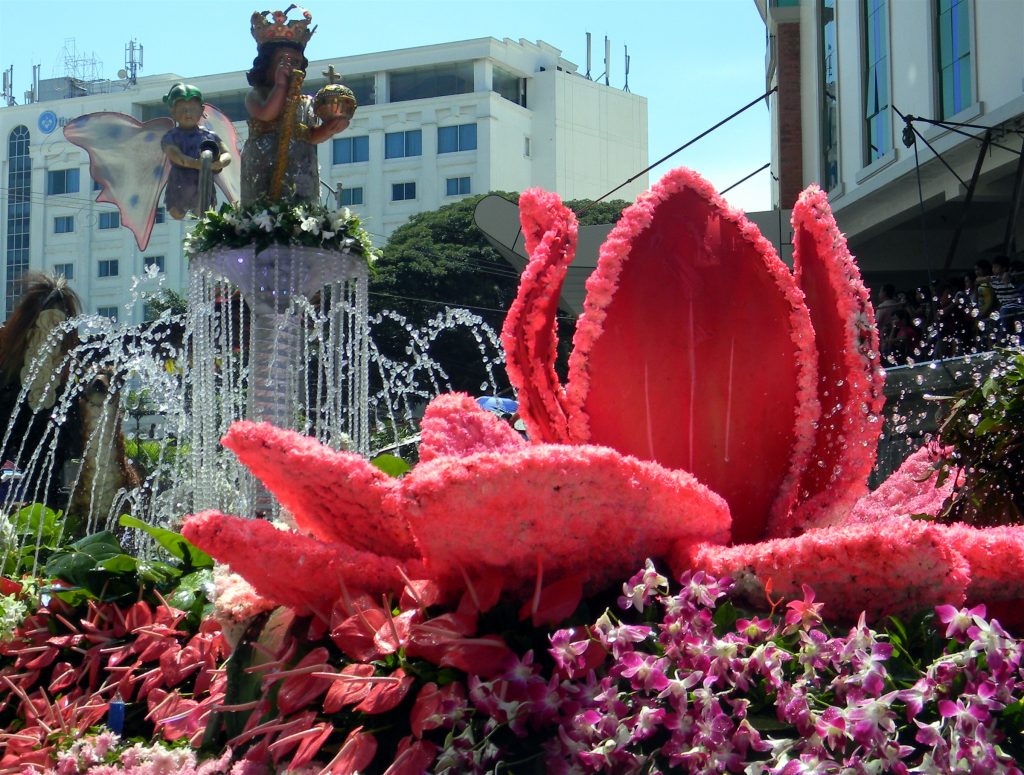“Bongga,” one of the few Filipinos words that were added into the Oxford Dictionary, means “extravagant or flamboyant.” This is exactly the word that describes this year’s Kadayawan sa Dabaw.

It’s pompous, lavish, awesome, colorful, and spectacular as Davao celebrates the festival not just for a week but during the whole month of August! From the first day up to the end of the month, spectators and tourists, foreigners and locals – all will have a grand time in the mother of all festivals in Mindanao.
But how did this most anticipated and awaited festival come to be?
It all started in the 1970’s when then Mayor Elias B. Lopez initiated tribal festivals featuring the lumad (native) and the Muslim tribes of the city where they could showcase their dances and rituals of thanksgiving. Lopez himself was from a Bagobo tribe.
In 1986, the local government initiated a program called “Unlad Proyekto Davao,” whose main objective was to unite the Dabawenyos after the turbulent Martial Law era of the Marcos regime. It was called “Apo Duwaling,” in honor of the three royalties for which Davao is famous for.
The word “apo” was taken from Mount Apo, the king of all mountains in the Philippines as it is the country’s highest peak at 10,311 feet above sea level. “Du” came from durian, the king of tropical fruits which has been described as having a smell “like hell” but has a taste that can be compared to that of “heaven.”
The term “waling” was from waling-waling, the queen of orchids whose ethic term means “graceful movement of a butterfly in flight.” They were once found only in the forests of Davao and Cotabato province. It was discovered in Davao around 1880 by Carl Roebellin, a German plant enthusiast for the Orchid House of Sanders.

At that time, “Apo Duwaling” was meant to showcase Davao City as a peaceful destination for other people from all over the country to visit and to do business. This was post-EDSA Revolution.
Two years later, then Mayor Rodrigo Duterte renamed the festival as “Kadayawan sa Dabaw.” Kadayawan is derived from the friendly greeting “Madayaw,” a term taken from a Dabawenyo word dayaw which means “good,” “valuable,” “superior” or “something that brings good fortune.”
Duterte, who is now the president of the Philippines, envisioned the festivity as a way to celebrate the bountiful harvest of Davao’s flowers, fruits and other produce as well as the wealth of the city’s cultures.
Although the festivity has become grand in its celebration, Kadayawan continues to honor the city’s richness and diverse artistic, cultural and historical heritage.
“I call on all Dabawenyos, lumads, Muslims and Christians to go out and not just enjoy the festivities but to use Kadayawan as an opportunity to continue to learn about one another, about what makes our culture unique and similar,” said Mayor “Inday” Sara Duterte during the launching of the 34th Kadayawan Festival.
Let’s go back in time when the city was still in its infancy stage. In those days, ethnic tribes lived together harmoniously, in peace and friendship. They were the ones who gave the province a name; Davao reportedly was derived from the word “daba-daba,” which means “fire.”
Historical records showed that those Davao’s ethnic tribes who lived at the foot of Mount Apo would come together during a bountiful harvest. This ritual served as their thanksgiving to the gods, particularly to the “Manama” (the Supreme Being).
Fruits, flowers, vegetables, rice and corn grains, and various farming implements were displayed on mats as villagers give their respect and thanks for the year’s abundance. Singing, dancing and offerings to their divine protectors were the highlights of the ritual.
In time, Davao was divided into three provinces (although there are five now) and the heart of all the gatherings and festivities became a chartered city. Despite this fact, the practice of thanksgiving (pahinungod in local dialect) is still very much practiced by modern day Dabawenyos.
The tradition continued to flourish and has evolved into an annual festival of thanksgiving. And that is how Kadayawan sa Dabaw came into existence.

Today, Kadayawan has transformed into a festival of festivals, with a number of spin-off festivals in the region. The festival honors Davao’s artistic, cultural and historical heritage, its past personified by the ancestral lumads, its people as they celebrate on the streets, and its floral industry as each representative parade in full regalia in thanksgiving for the blessings granted on the city.
Actually, the celebration interfaces several aspects: tribal, industrial, sports, arts and entertainment. In the past, it is commemorated every third week of August but this year it has expanded into a month-long celebration.
The most anticipated is the street dancing, called Indak-Indak sa Kadalanan, which will be held this year on August 17. It has two main components. The first is the street parade, where performers groove it up while parading along selected points of the city. The second is the showdown, where the very same people perform at the Kadayawan Square, which has traditionally been San Pedro Street. The parade normally takes place in the morning, the showdown from the afternoon to evening.
“The Indak-Indak sa Kadalanan is wildly popular because of the distinctively Mindanaoan beat and costumes,” someone quipped. “Several tourists come to Davao to watch hundreds of people dancing with vigor in the streets, clad in their native attire and carrying extravagant props that would give Hollywood studios a serious run for their money.”
This year, the floral float parade, called Pamulak Kadayawan, will not happen after the street dancing. Instead, it will be done on August 24.

Previous Kadayawan officials said the Pamulak was patterned after the Pasadena Parade of Roses in the United States, where flowers and fruits are set in colorful floats by business establishments, community assemblies and peoples’ organizations as they promenade on the streets symbolizing all the bounty sustainably enjoyed by the city’s residents.

On why Kadayawan sa Dabaw is touted as the mother of all festivals in Mindanao, here’s an explanation from an aficionado: “Kadayawan is an art form in itself. A festival perfect fit for a local government that tries to position itself as the cultural capital of the Philippines. This is the best time to catch the sights, the sounds, the colors and the scent all mixing together to encapsulate the rich diversity of a place which was long ago described as the garden of the gods.”






